Noticias y Generalidades
+63
Nilo
gdiaz62
jc65
jhonnx
AK - 103 Military
joemarquez
DaniHound
flint
calt2002
Zulu
daniel alejandro
MIG
luis colmenares
ciruiostar
jhonny alberto navas pach
CARIBDIS
EL PATRIOTA
Heuss
belushitaxx
DJ-ZG
Ch0pos
Altaïr Ibn-La'Ahad
Due
soldadox
armandodfl
MIG-V
Prietocol
oscaramh
Condor1
Sgt.Elias
Armetalic
ATILA
Moderador 1
Siant
Lucio
Cevarez
daniel o'leary
Tiuna
sanvicentedepaul
adrelid
-Clark-
horaes
rafahot59
jeepero911
RODOLFO MARCHAN
orlando jose navas pachec
loco9181
HUNTER VZLA
Gerardo
jeep
delta074
Anti-imperialista
orinoco_man
Caribe
Chaco
cadete 1
horz
dager48
vudu 1
CHACAL
nick7777
Arpia
zuhe
67 participantes
Página 17 de 40.
Página 17 de 40. •  1 ... 10 ... 16, 17, 18 ... 28 ... 40
1 ... 10 ... 16, 17, 18 ... 28 ... 40 
 Re: Noticias y Generalidades
Re: Noticias y Generalidades
Pero fíjate, se ha buscado hacer piezas de k-8 o y8, naiboa su envío de piezas siempre es con ellos que se sepa tampoco los chinos han ofrecido darnos licencias para fabricar ni una tuerca de sus aviones aquí ojo con eso no es tirarle el lastre a los rusos por eso.
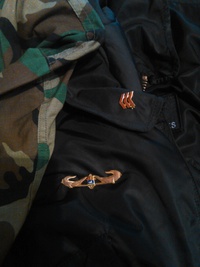
vudu 1- Capitán
- Cantidad de envíos : 12486
Fecha de inscripción : 24/03/2011
Localización : selva!!!
 Re: Noticias y Generalidades
Re: Noticias y Generalidades
ES que es obvio,que si queremos industria aeronaútica,tendreemos que dárnosla nosotros:maldad que esperemos que "los aliados" nos ván a ceder licencias por 20 o 30 peorros avioncitos,solo que de verdad se piense en grande,(que ya es hora).

nick7777- Teniente Coronel
- Cantidad de envíos : 14560
Fecha de inscripción : 22/04/2009
 Re: Noticias y Generalidades
Re: Noticias y Generalidades
Exacto, ya eso es HARINA DE OTRO SACO se tiene que empezar por algo autóctono pero de verdad ya eso es casi urgente

vudu 1- Capitán
- Cantidad de envíos : 12486
Fecha de inscripción : 24/03/2011
Localización : selva!!!
 Re: Noticias y Generalidades
Re: Noticias y Generalidades
O cuadrar un paquetazo de adquisición de aeronaves, con opción a transferencias de tecnologías, y entrenamiento para hacerlos en Venezuela, partes motores y demás periquitos

vudu 1- Capitán
- Cantidad de envíos : 12486
Fecha de inscripción : 24/03/2011
Localización : selva!!!
 Re: Noticias y Generalidades
Re: Noticias y Generalidades
Es que no pedimos transferencia para fabricar aviones,
Pedimos los permisos para fabricar los repuestos acá.
Los Chinos han sido muy receptivos, de hechos, han aceptado modificaciones hechas acá por nosotros y las han llevado a modificaciones para ellos. ¿Quién gano?; Ganamos ambos. Una de ellas las digo porque todos la vieron pero nadie detalla, que es el compartimiento externo que se le anexa por fuera a la hora de traslados.
Eso es lo que queremos con los Rusos, muchas piezas mecanizadas, forjadas, inclusive fundidas podemos hacerla acá de algunos componentes en los repuestos, o todo el repuesto, al menos lo de mayor uso.
Solo queremos es ahorrar tiempo, dinero y que no den tantas largas a las cosas.
Te apuestos que si los Rusos nos autorizan y montamos talleres acá para hacerle los repuestos más comunes;
Cauchos, sistemas hidráulico, cartuchos de los asientos, sistemas de aterrizaje, o `ring con sus soporte, aviónica, etc. Y no nos llenan de repuestos que poco se utilizan;
Fácilmente le haríamos un primer pedido de 36 aviones YAK 130; y en un segundo llevarlo a 50 y/o una segunda compra de 12 aviones SU35. Pero si ellos no dan el paso en audacia; quedara para Los Chinos.
"La fortuna Ayuda a los Audaces"


Pedimos los permisos para fabricar los repuestos acá.
Los Chinos han sido muy receptivos, de hechos, han aceptado modificaciones hechas acá por nosotros y las han llevado a modificaciones para ellos. ¿Quién gano?; Ganamos ambos. Una de ellas las digo porque todos la vieron pero nadie detalla, que es el compartimiento externo que se le anexa por fuera a la hora de traslados.
Eso es lo que queremos con los Rusos, muchas piezas mecanizadas, forjadas, inclusive fundidas podemos hacerla acá de algunos componentes en los repuestos, o todo el repuesto, al menos lo de mayor uso.
Solo queremos es ahorrar tiempo, dinero y que no den tantas largas a las cosas.
Te apuestos que si los Rusos nos autorizan y montamos talleres acá para hacerle los repuestos más comunes;
Cauchos, sistemas hidráulico, cartuchos de los asientos, sistemas de aterrizaje, o `ring con sus soporte, aviónica, etc. Y no nos llenan de repuestos que poco se utilizan;
Fácilmente le haríamos un primer pedido de 36 aviones YAK 130; y en un segundo llevarlo a 50 y/o una segunda compra de 12 aviones SU35. Pero si ellos no dan el paso en audacia; quedara para Los Chinos.
"La fortuna Ayuda a los Audaces"

delta074- Coronel
- Cantidad de envíos : 15221
Fecha de inscripción : 31/08/2009
 Re: Noticias y Generalidades
Re: Noticias y Generalidades
Claro, no me explique bien para hacer el avión completo es mucho pedir aun a corto plazo es algunas piezas tu mencionas detalles de los k8 exacto pero es llevarlo a cosas mas vitales.

vudu 1- Capitán
- Cantidad de envíos : 12486
Fecha de inscripción : 24/03/2011
Localización : selva!!!
 Re: Noticias y Generalidades
Re: Noticias y Generalidades
Invertirán 305 millones en obras en bases aéreas
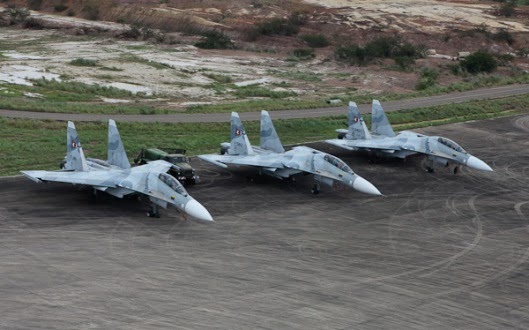
Mediante resoluciones del Ministerio del Poder Popular para la Defensa, publicadas en la Gaceta Oficial Nro. 40.327, de fecha 6 de enero, se delegó en el general de brigada José Gregorio Pereira Matute, en su carácter de director General del Servicio Autónomo de la Fuerza Aérea Venezolana (Safav), la facultad de suscribir los documentos necesarios para la administración, ejecución y desembolso de los recursos aprobados para la realización de distintas obras, por un total de 305 millones de bolívares.
En primer término, para la ampliación de la capacidad de almacenamiento de los tanques de combustible de aviación, en la base aeroespacial “Capitán Manuel Ríos” (El Sobrero, estado Guárico) y base aérea “Teniente Luis del Valle García” (Barcelona, estado Anzoátegui), por la cantidad de 190 millones de bolívares.
En segundo término, para la culminación de las obras de infraestructura de la Aviación Militar, por un monto de 115 millones de bolívares.
Presupuesto 2014
Cabe señalar, que en la Ley de Presupuesto para el Ejercicio Fiscal 2014, aprobada por la Asamblea Nacional en el pasado mes de diciembre, están contemplados 2.100 millones de bolívares para la adecuación de la infraestructura y el equipamiento de los sistemas de información y comunicación de la Aviación Militar.
Fuente: notitarde; Carlos E. Hernández
http://www.venezueladefensa.com/

Mediante resoluciones del Ministerio del Poder Popular para la Defensa, publicadas en la Gaceta Oficial Nro. 40.327, de fecha 6 de enero, se delegó en el general de brigada José Gregorio Pereira Matute, en su carácter de director General del Servicio Autónomo de la Fuerza Aérea Venezolana (Safav), la facultad de suscribir los documentos necesarios para la administración, ejecución y desembolso de los recursos aprobados para la realización de distintas obras, por un total de 305 millones de bolívares.
En primer término, para la ampliación de la capacidad de almacenamiento de los tanques de combustible de aviación, en la base aeroespacial “Capitán Manuel Ríos” (El Sobrero, estado Guárico) y base aérea “Teniente Luis del Valle García” (Barcelona, estado Anzoátegui), por la cantidad de 190 millones de bolívares.
En segundo término, para la culminación de las obras de infraestructura de la Aviación Militar, por un monto de 115 millones de bolívares.
Presupuesto 2014
Cabe señalar, que en la Ley de Presupuesto para el Ejercicio Fiscal 2014, aprobada por la Asamblea Nacional en el pasado mes de diciembre, están contemplados 2.100 millones de bolívares para la adecuación de la infraestructura y el equipamiento de los sistemas de información y comunicación de la Aviación Militar.
Fuente: notitarde; Carlos E. Hernández
http://www.venezueladefensa.com/

Tiuna- Cabo Primero
- Cantidad de envíos : 3803
Fecha de inscripción : 31/07/2012
Edad : 38
Localización : Vargas, venezuela
 Re: Noticias y Generalidades
Re: Noticias y Generalidades
delta074 escribió:Es que no pedimos transferencia para fabricar aviones,
Pedimos los permisos para fabricar los repuestos acá.
Los Chinos han sido muy receptivos, de hechos, han aceptado modificaciones hechas acá por nosotros y las han llevado a modificaciones para ellos. ¿Quién gano?; Ganamos ambos. Una de ellas las digo porque todos la vieron pero nadie detalla, que es el compartimiento externo que se le anexa por fuera a la hora de traslados.
Eso es lo que queremos con los Rusos, muchas piezas mecanizadas, forjadas, inclusive fundidas podemos hacerla acá de algunos componentes en los repuestos, o todo el repuesto, al menos lo de mayor uso.
Solo queremos es ahorrar tiempo, dinero y que no den tantas largas a las cosas.
Te apuestos que si los Rusos nos autorizan y montamos talleres acá para hacerle los repuestos más comunes;
Cauchos, sistemas hidráulico, cartuchos de los asientos, sistemas de aterrizaje, o `ring con sus soporte, aviónica, etc. Y no nos llenan de repuestos que poco se utilizan;
Fácilmente le haríamos un primer pedido de 36 aviones YAK 130; y en un segundo llevarlo a 50 y/o una segunda compra de 12 aviones SU35. Pero si ellos no dan el paso en audacia; quedara para Los Chinos.
"La fortuna Ayuda a los Audaces"
Y complementando lo que posteo nick, pondria como proyecto lo de tomar en serio las milicias aereas. Quizas 38 aparatos del k8 no justifiquen nada, pero que tal fabricar un centenar?
Hablo de reformar por completo nuestra forma de formar pilotos. Hay mucha gente que le gustaria ser piloto. Podemos hacer que sea a traves de las milicas con K-8 y otro aparato turbohelice o hasta de piston, para el entrenamiento primario. Ellos podrian patrullar en misiones contra narcotrafico, tipo policial, recate... De lo mejor que salga de la milicia, se puede integrar a la AMBV pasando ya por la Escuela. Ya esto seria un entrenamiento mas avanzado y hasta sofisticado.
Podemos desarrollar la idea.
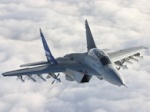
Cevarez- Sargento Ayudante
- Cantidad de envíos : 8038
Fecha de inscripción : 09/01/2010
Localización : Venezuela
 Re: Noticias y Generalidades
Re: Noticias y Generalidades
Cevarez escribió:delta074 escribió:Es que no pedimos transferencia para fabricar aviones,
Pedimos los permisos para fabricar los repuestos acá.
Los Chinos han sido muy receptivos, de hechos, han aceptado modificaciones hechas acá por nosotros y las han llevado a modificaciones para ellos. ¿Quién gano?; Ganamos ambos. Una de ellas las digo porque todos la vieron pero nadie detalla, que es el compartimiento externo que se le anexa por fuera a la hora de traslados.
Eso es lo que queremos con los Rusos, muchas piezas mecanizadas, forjadas, inclusive fundidas podemos hacerla acá de algunos componentes en los repuestos, o todo el repuesto, al menos lo de mayor uso.
Solo queremos es ahorrar tiempo, dinero y que no den tantas largas a las cosas.
Te apuestos que si los Rusos nos autorizan y montamos talleres acá para hacerle los repuestos más comunes;
Cauchos, sistemas hidráulico, cartuchos de los asientos, sistemas de aterrizaje, o `ring con sus soporte, aviónica, etc. Y no nos llenan de repuestos que poco se utilizan;
Fácilmente le haríamos un primer pedido de 36 aviones YAK 130; y en un segundo llevarlo a 50 y/o una segunda compra de 12 aviones SU35. Pero si ellos no dan el paso en audacia; quedara para Los Chinos.
"La fortuna Ayuda a los Audaces"
Y complementando lo que posteo nick, pondria como proyecto lo de tomar en serio las milicias aereas. Quizas 38 aparatos del k8 no justifiquen nada, pero que tal fabricar un centenar?
Hablo de reformar por completo nuestra forma de formar pilotos. Hay mucha gente que le gustaria ser piloto. Podemos hacer que sea a traves de las milicas con K-8 y otro aparato turbohelice o hasta de piston, para el entrenamiento primario. Ellos podrian patrullar en misiones contra narcotrafico, tipo policial, recate... De lo mejor que salga de la milicia, se puede integrar a la AMBV pasando ya por la Escuela. Ya esto seria un entrenamiento mas avanzado y hasta sofisticado.
Podemos desarrollar la idea.
+1 apoyo tu idea se pueden sumar L-15

orlando jose navas pachec- Cabo Segundo
- Cantidad de envíos : 2281
Fecha de inscripción : 27/10/2009
Localización : venezuela
 Re: Noticias y Generalidades
Re: Noticias y Generalidades
Compatriotas noticia resiente que nos indica para donde van 30 aviones de entrenamiento Diamond DA40.
Ya sabemos para dónde van los 30 aviones de entrenamiento Diamond DA40:

Pero para donde irán los helicópteros Enstrom 480B:

Crearán nueva escuela de pilotos de la AMB en Morichal.
Este jueves 9 de enero, se realizó una reunión en la División Carabobo del Aeropuerto de Morichal en el Estado Monagas, con motivo de la creación de la nueva escuela de pilotos de la AMB.
Diversos temas se trataron como lo es la ampliación de la pista vieja del Aeropuerto y la creación de una nueva pista aérea como mínimo de 3.000 metros, también la adquisición de 30 aviones de entrenamiento traídos de Austria, y 2 simuladores de vuelo, además la creación de aulas, dormitorios y zonas recreativas.
En la reunión, estuvo presente el M/G Giuseppe Ángelo Yoffreda Yorio, Comandante General de la Aviación Militar Bolivariana, acompañado por el G/D José Manuel Duque Marín comandante aéreo de operaciones, G/D Marcos Flores Curiel comandante del Cuerpo de Ingenieros de la AMB, y demás representantes del componente aéreo quienes se congregaron con el Ingeniero Pedro León director ejecutivo de producción de la Faja Petrolífera del Orinoco, entre otros representantes de la empresa; quienes realizaron un recorrido por la fuente de reservas de hidrocarburos líquidos más grande del mundo, que comprende una extensión de 55.314 Km2 y un aérea de explotación actual de 11.593 Km2, ubicada al sur de los estados Guárico, Anzoátegui y Monagas.
Por su parte el Ing. “Pedro León expresó me siento bastante contento con la planificación de este nuevo proyecto porque garantizan de alguna manera el fortalecimiento y desarrollo de la Faja Petrolífera y de la Aviación Militar Bolivariana, debido a que la AMB será garante de cada uno de los espacios de la planta”.
http://www.aviacion.mil.ve/modules/news/article.php?storyid=1549
Ya sabemos para dónde van los 30 aviones de entrenamiento Diamond DA40:

Pero para donde irán los helicópteros Enstrom 480B:


Chaco- Teniente
- Cantidad de envíos : 10268
Fecha de inscripción : 19/05/2010
 Re: Noticias y Generalidades
Re: Noticias y Generalidades
esta sera escuela de nivel medio me imagino y la otra que existe es la de barquisimeto que usaban el f-5 y los viejos T-2ta esa irian el que se decidan comprar sea Yak-130 o L-15 bueno son expeculaciones mia

orlando jose navas pachec- Cabo Segundo
- Cantidad de envíos : 2281
Fecha de inscripción : 27/10/2009
Localización : venezuela
 Re: Noticias y Generalidades
Re: Noticias y Generalidades
Sobre la misma noticia....
http://www.venezueladefensa.com/2014/01/amb-creara-una-nueva-escuela-de-pilotos.html
http://www.venezueladefensa.com/2014/01/amb-creara-una-nueva-escuela-de-pilotos.html

Condor1- Soldado Raso
- Cantidad de envíos : 93
Fecha de inscripción : 30/06/2013
Localización : Venezuela
 Re: Noticias y Generalidades
Re: Noticias y Generalidades
Attrition: Fighter Pilots Doomed By Poverty
December 30, 2013: The political battles over chronic deficit spending in the United States has led to sharp and often unexpected cuts in the military budget over the last few years. This has forced the U.S. Air force to make major cuts in the hours combat pilots fly for training. The latest cut reduces many pilots to 120 hours a year. That’s about half of what it was a decade ago. There is concern that this will threaten the domination of the air the United States has had since World War II. Moreover it’s been over 60 years since any American troops have been attacked from the air. Much of that is attributed to high number of hours American pilots spend training in the air each year. But with it costing over $20,000 an hour to keep combat aircraft in the air many military budgets can’t handle it.
It’s not just the United States that is facing budget pressures and the temptation to cut flying hours. In early 2013 the French Air Force adopted radical new training methods to deal with such cuts. Rather than cut the flying time of all pilots by 17 percent (from 180 hours a year to 150), half the pilots would remain at 180 hours while the other half would be reduced to 40 hours in combat aircraft (like the Rafale) and another 140 hours in a high-end jet trainer aircraft (that are much cheaper to operate than the Rafale, or similar aircraft). If there were a major war and the second line pilots were needed they would undergo 60-90 days of intense training in the Rafale, amounting to over a hundred hours of flight time, which the French air force leaders believe would make them roughly equal to the first line pilots in terms of capability.
All this is something of a gamble and it’s unclear if it will actually work. But the French have little choice, since the money is not there to maintain 180 hours a year for everyone and as the recent operations in Mali made clear, you need highly skilled and experienced pilots to carry off operations like that without losing aircraft.
The U.S., currently, and Russia, during the 1990s, used a similar two-tier system, where pilots not heading into a combat zone had their flight hours cut. But when a squadron was scheduled for a trip to a combat zone, pilots got a lot more flying hours for the few months before they went. This apparently was sufficient to get the pilots back (or reasonably close to) their former (with 180 or more flight hours a year) competence levels. The U.S. has already been using this system because of earlier budget cuts.
There are several other unknowns with the new French system. Continued budget cuts may result in using a high end turboprop trainer instead of a jet trainer. Then there’s the issue of simulators. Research into the effectiveness of high-end simulators (which cost less than ten percent per hour compared to the actual aircraft) is still unclear when you try to substitute simulator time for a lot of actual flying hours (like down to 40 hours a year). It has long been theoretically possible to substitute simulator hours for the lost flight time and still have a pilot able to perform at an acceptably high level. This new budget crises in Western air forces may be a way to finally clear up just how effective simulator use is.
All this is not a new problem. Over the last decade South Korea has been cutting the hours its combat pilots flew each year. By 2009 many South Korean pilots were down to 120 hours a year, which was the same level as the hundred or so North Korean MiG-29 and modernized MiG-21 pilots got. Many of the other North Korean pilots are lucky to get a few hours a month. But the Americans were upset because if there was a war the better trained U.S. pilots would end up doing more of the work. The South Koreans believed that the situation is so bad up north that the North Korean air force won't even be able to get many of their 500 combat aircraft off the ground. And those that do fly would be operated by very inexperienced pilots.
Since the end of the Cold War in 1991 the rising price of oil and shrinking defense budgets forced air forces everywhere to cut back on flight training for their pilots. That could have some interesting consequences. Over the last half century, it's been found that combat pilots need about 200 hours in the air each year to build and maintain their combat skills. So it's with great reluctance that some nations cut back on those flying hours. Back in 2005 South Korea cut its pilots back from 139 to 134 hours, and then to 131. In the 1990s, South Korean pilots were getting 150-200 hours. That's what German and Japanese pilots still g0t until recently. At the same time some European nations had their pilots in the air less than South Korea. Then again, the South Koreans are being practical about this, because their most likely foe, North Korea, has its pilots flying much less, on average.
The nations with the reputations for the most skilled pilots (Israel, United States, Britain, Canada) have always sought to get combat pilots in the air 200 or more hours a year. Taiwan gives it pilots 180 hours a year because China is increasing flight hours, with pilots in some elite squadrons already flying 180 hours a year. Most Chinese pilots get closer to a hundred and China can’t afford to give them more.
The importance of flight hours should be a no-brainer. During World War II (1939-45), when some nations simply didn't have the fuel available for pilot training, they saw combat (and non-combat) losses increase as training-hours-in-the-air declined. Nazi Germany's warplanes began losing, big time, when they could no longer produce enough fuel to allow their trainee pilots sufficient time in the air. This was a trend that had been ongoing since 1942. Up until that time new German pilots got 240 hours of flying time before entering combat. By comparison, British pilots only received 200 hours and Soviet pilots even less. Germany ruled the skies. But in late 1942, Germany reduced training time to 205 hours. The British now had the fuel, and increased theirs to 340 hours, while the US was providing 270 hours. In the Summer of 1943, the British increased flying time to 335 hours and the US went to 320 hours. At the same time, the Germans reduced it to 170 hours. In 1944 the Germans were down to 110 hours, while the British were at 340 hours and the Americans at 360. The pilots with fewer flying hours got shot down more often and in turn were less likely to shoot anyone down.
The situation was the same in the Pacific, where increasingly effective U.S. submarine attacks sank so many Japanese tankers that there was not enough fuel available to train pilots. In 1941, a Japanese pilot trainee 700 hours of flight time to qualify as a full-fledged pilot in the Imperial Navy, while his American counterpart needed only 305 hours. About half of the active duty pilots in the U.S. Navy in late 1941 had between 300 and 600 hours flying experience, a quarter between 600 and 1000 hours, and the balance more than 1000 hours. Most of these flight hours had been acquired in the last few years. But at the beginning of the war nearly 75 percent of the U.S. Navy's pilots had fewer flying hours than did the least qualified of the Japanese Navy's pilots.
On the down side, the Japanese pilot training program was so rigorous that only about 100 men a year were being graduated from a program that required 4-5 years. In 1940 it was proposed that the pilot training program be made shorter, less rigorous, and more productive, in order to build up the pool of available pilots to about 15,000. This was rejected. Japan believed it could not win a long war and needed the best pilots possible in order to win a short one.
Naturally, once the war began the Imperial Navy started losing pilots faster than they could be replaced. For example, the 29 pilots lost at Pearl Harbor represented more than a quarter of the annual crop. The battles of the next year led to the loss of hundreds of superb pilots. This finally forced the Japanese to reform their pilot training programs. Time to train a pilot, and hours in the air spiraled downward. By 1945 men were being certified fit for combat duty with less than four months training. In contrast, the U.S. Navy was actually increasing its flight time, while keeping pilot training programs to about 18 months. In 1943, the U.S. Navy increased flight hours for trainees to 500, while Japan cut its hours to 500. In 1944, the U.S. hours went up to 525, while Japan cut it to 275 hour. In 1945, a shortage of fuel had Japanese trainee pilots flying on 90 hours before entering combat. In the air, this produced lopsided American victories, with ten or more Japanese aircraft being lost for each U.S. one.
This experience was remembered after World War II, and reinforced when, in campaign after campaign, the side with the fewer training hours per pilot, suffered the greatest losses. Now, unable to afford fuel for training, flight simulators are being used more frequently. These devices are becoming cheaper and more realistic, but research (mostly from training exercises, not actual combat) shows that each hour of simulator time is worth only about half or two-thirds of an hour in the air.
http://www.strategypage.com/htmw/htatrit/20131230.aspx
December 30, 2013: The political battles over chronic deficit spending in the United States has led to sharp and often unexpected cuts in the military budget over the last few years. This has forced the U.S. Air force to make major cuts in the hours combat pilots fly for training. The latest cut reduces many pilots to 120 hours a year. That’s about half of what it was a decade ago. There is concern that this will threaten the domination of the air the United States has had since World War II. Moreover it’s been over 60 years since any American troops have been attacked from the air. Much of that is attributed to high number of hours American pilots spend training in the air each year. But with it costing over $20,000 an hour to keep combat aircraft in the air many military budgets can’t handle it.
It’s not just the United States that is facing budget pressures and the temptation to cut flying hours. In early 2013 the French Air Force adopted radical new training methods to deal with such cuts. Rather than cut the flying time of all pilots by 17 percent (from 180 hours a year to 150), half the pilots would remain at 180 hours while the other half would be reduced to 40 hours in combat aircraft (like the Rafale) and another 140 hours in a high-end jet trainer aircraft (that are much cheaper to operate than the Rafale, or similar aircraft). If there were a major war and the second line pilots were needed they would undergo 60-90 days of intense training in the Rafale, amounting to over a hundred hours of flight time, which the French air force leaders believe would make them roughly equal to the first line pilots in terms of capability.
All this is something of a gamble and it’s unclear if it will actually work. But the French have little choice, since the money is not there to maintain 180 hours a year for everyone and as the recent operations in Mali made clear, you need highly skilled and experienced pilots to carry off operations like that without losing aircraft.
The U.S., currently, and Russia, during the 1990s, used a similar two-tier system, where pilots not heading into a combat zone had their flight hours cut. But when a squadron was scheduled for a trip to a combat zone, pilots got a lot more flying hours for the few months before they went. This apparently was sufficient to get the pilots back (or reasonably close to) their former (with 180 or more flight hours a year) competence levels. The U.S. has already been using this system because of earlier budget cuts.
There are several other unknowns with the new French system. Continued budget cuts may result in using a high end turboprop trainer instead of a jet trainer. Then there’s the issue of simulators. Research into the effectiveness of high-end simulators (which cost less than ten percent per hour compared to the actual aircraft) is still unclear when you try to substitute simulator time for a lot of actual flying hours (like down to 40 hours a year). It has long been theoretically possible to substitute simulator hours for the lost flight time and still have a pilot able to perform at an acceptably high level. This new budget crises in Western air forces may be a way to finally clear up just how effective simulator use is.
All this is not a new problem. Over the last decade South Korea has been cutting the hours its combat pilots flew each year. By 2009 many South Korean pilots were down to 120 hours a year, which was the same level as the hundred or so North Korean MiG-29 and modernized MiG-21 pilots got. Many of the other North Korean pilots are lucky to get a few hours a month. But the Americans were upset because if there was a war the better trained U.S. pilots would end up doing more of the work. The South Koreans believed that the situation is so bad up north that the North Korean air force won't even be able to get many of their 500 combat aircraft off the ground. And those that do fly would be operated by very inexperienced pilots.
Since the end of the Cold War in 1991 the rising price of oil and shrinking defense budgets forced air forces everywhere to cut back on flight training for their pilots. That could have some interesting consequences. Over the last half century, it's been found that combat pilots need about 200 hours in the air each year to build and maintain their combat skills. So it's with great reluctance that some nations cut back on those flying hours. Back in 2005 South Korea cut its pilots back from 139 to 134 hours, and then to 131. In the 1990s, South Korean pilots were getting 150-200 hours. That's what German and Japanese pilots still g0t until recently. At the same time some European nations had their pilots in the air less than South Korea. Then again, the South Koreans are being practical about this, because their most likely foe, North Korea, has its pilots flying much less, on average.
The nations with the reputations for the most skilled pilots (Israel, United States, Britain, Canada) have always sought to get combat pilots in the air 200 or more hours a year. Taiwan gives it pilots 180 hours a year because China is increasing flight hours, with pilots in some elite squadrons already flying 180 hours a year. Most Chinese pilots get closer to a hundred and China can’t afford to give them more.
The importance of flight hours should be a no-brainer. During World War II (1939-45), when some nations simply didn't have the fuel available for pilot training, they saw combat (and non-combat) losses increase as training-hours-in-the-air declined. Nazi Germany's warplanes began losing, big time, when they could no longer produce enough fuel to allow their trainee pilots sufficient time in the air. This was a trend that had been ongoing since 1942. Up until that time new German pilots got 240 hours of flying time before entering combat. By comparison, British pilots only received 200 hours and Soviet pilots even less. Germany ruled the skies. But in late 1942, Germany reduced training time to 205 hours. The British now had the fuel, and increased theirs to 340 hours, while the US was providing 270 hours. In the Summer of 1943, the British increased flying time to 335 hours and the US went to 320 hours. At the same time, the Germans reduced it to 170 hours. In 1944 the Germans were down to 110 hours, while the British were at 340 hours and the Americans at 360. The pilots with fewer flying hours got shot down more often and in turn were less likely to shoot anyone down.
The situation was the same in the Pacific, where increasingly effective U.S. submarine attacks sank so many Japanese tankers that there was not enough fuel available to train pilots. In 1941, a Japanese pilot trainee 700 hours of flight time to qualify as a full-fledged pilot in the Imperial Navy, while his American counterpart needed only 305 hours. About half of the active duty pilots in the U.S. Navy in late 1941 had between 300 and 600 hours flying experience, a quarter between 600 and 1000 hours, and the balance more than 1000 hours. Most of these flight hours had been acquired in the last few years. But at the beginning of the war nearly 75 percent of the U.S. Navy's pilots had fewer flying hours than did the least qualified of the Japanese Navy's pilots.
On the down side, the Japanese pilot training program was so rigorous that only about 100 men a year were being graduated from a program that required 4-5 years. In 1940 it was proposed that the pilot training program be made shorter, less rigorous, and more productive, in order to build up the pool of available pilots to about 15,000. This was rejected. Japan believed it could not win a long war and needed the best pilots possible in order to win a short one.
Naturally, once the war began the Imperial Navy started losing pilots faster than they could be replaced. For example, the 29 pilots lost at Pearl Harbor represented more than a quarter of the annual crop. The battles of the next year led to the loss of hundreds of superb pilots. This finally forced the Japanese to reform their pilot training programs. Time to train a pilot, and hours in the air spiraled downward. By 1945 men were being certified fit for combat duty with less than four months training. In contrast, the U.S. Navy was actually increasing its flight time, while keeping pilot training programs to about 18 months. In 1943, the U.S. Navy increased flight hours for trainees to 500, while Japan cut its hours to 500. In 1944, the U.S. hours went up to 525, while Japan cut it to 275 hour. In 1945, a shortage of fuel had Japanese trainee pilots flying on 90 hours before entering combat. In the air, this produced lopsided American victories, with ten or more Japanese aircraft being lost for each U.S. one.
This experience was remembered after World War II, and reinforced when, in campaign after campaign, the side with the fewer training hours per pilot, suffered the greatest losses. Now, unable to afford fuel for training, flight simulators are being used more frequently. These devices are becoming cheaper and more realistic, but research (mostly from training exercises, not actual combat) shows that each hour of simulator time is worth only about half or two-thirds of an hour in the air.
http://www.strategypage.com/htmw/htatrit/20131230.aspx

Arpia- Sargento Mayor de Tercera
- Cantidad de envíos : 5340
Fecha de inscripción : 01/09/2009
 Re: Noticias y Generalidades
Re: Noticias y Generalidades
POR FAVOR TRADUCIR
http://translate.google.co.ve/#en/es/
y luego publican que todos no tienen la habilidad de nick armet, y ceva para el ingles ni de vudulo para ruso
http://translate.google.co.ve/#en/es/
y luego publican que todos no tienen la habilidad de nick armet, y ceva para el ingles ni de vudulo para ruso

horz- Soldado Raso
- Cantidad de envíos : 694
Fecha de inscripción : 10/04/2013
Edad : 45
Localización : anzoategui
 Re: Noticias y Generalidades
Re: Noticias y Generalidades
1 comentarioCondor1 escribió:Sobre la misma noticia....
http://www.venezueladefensa.com/2014/01/amb-creara-una-nueva-escuela-de-pilotos.html
Por cierto,alli mismo el amigo que tanto critica a FMG, sale que Venemil es el que critica,critican las personas no la institucion.
¿Que paso?...¿El mundo al reves?Héctor F. Aguilar12 de enero de 2014, 9:48
Caramba, VENEMIL que critica tanto al FMG y ahora son mas FASCISTAS que ellos.
Responder

delta074- Coronel
- Cantidad de envíos : 15221
Fecha de inscripción : 31/08/2009
 Re: Noticias y Generalidades
Re: Noticias y Generalidades
delta074 escribió:Es que no pedimos transferencia para fabricar aviones,
Pedimos los permisos para fabricar los repuestos acá.
Los Chinos han sido muy receptivos, de hechos, han aceptado modificaciones hechas acá por nosotros y las han llevado a modificaciones para ellos.
Delta
quien te dijo que los chinos fueron receptivos? si andaban, dicho coloquialmente: ARRECHOS porque nosotros hicimos el compartimiento de carga del K-8 por que ellos andaban diciendo "no no no lo hagan ustedes nosotlos se lo hacemos!!" y no les paramos bolas! nosotros pudimos sin ayuda.
así mismo fue! y creo ya lo había comentado hace un tiempo, los chinos "alechos" porque nos inventamos una vaina que ellos no nos hicieron! jajaja
ahora, lo de que hablas de transferencia, eso solo lo he visto que lo han acordado con los Gripen con Embraer. aquí no. aquí tenemos que inventar sólitos porque la "transferencia" que nos dan, no se hasta que nivel a llegado, pero lo único que se ve hasta ahora es solo el conocimiento para operarlos y hacerles los mantenimientos. mas nada. tanto rusos como chinos.
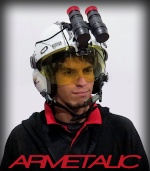
Armetalic- Distinguido
- Cantidad de envíos : 1601
Fecha de inscripción : 26/08/2009
Edad : 35
Localización : Puerto Cabello - Venezuela
 Re: Noticias y Generalidades
Re: Noticias y Generalidades
las fuentes de delta al parecer vienen de lo mas profundo de su imaginación

Prietocol- Distinguido
- Cantidad de envíos : 1607
Fecha de inscripción : 26/12/2009
Localización : Estado Zulia
 Re: Noticias y Generalidades
Re: Noticias y Generalidades
Saludos
Ceofanb: Interceptado e inutilizado un incursor aéreo en el Sur del Lago

Ver:
http://www.aporrea.org/regionales/n243226.html
Ceofanb: Interceptado e inutilizado un incursor aéreo en el Sur del Lago

Ver:
http://www.aporrea.org/regionales/n243226.html
 Re: Noticias y Generalidades
Re: Noticias y Generalidades
Aja sigan pues

vudu 1- Capitán
- Cantidad de envíos : 12486
Fecha de inscripción : 24/03/2011
Localización : selva!!!
 Re: Noticias y Generalidades
Re: Noticias y Generalidades
zuhe escribió:Saludos
Ceofanb: Interceptado e inutilizado un incursor aéreo en el Sur del Lago
Ver:
http://www.aporrea.org/regionales/n243226.html
UPS de Mergullo
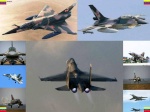
Lucio- Soldado Raso
- Cantidad de envíos : 312
Fecha de inscripción : 25/06/2009
Edad : 56
 Re: Noticias y Generalidades
Re: Noticias y Generalidades
Antonov llegando hoy a bael

Facebook de Aviamil

Facebook de Aviamil

Tiuna- Cabo Primero
- Cantidad de envíos : 3803
Fecha de inscripción : 31/07/2012
Edad : 38
Localización : Vargas, venezuela
 Re: Noticias y Generalidades
Re: Noticias y Generalidades
Mina Antihelicópteros Rusa
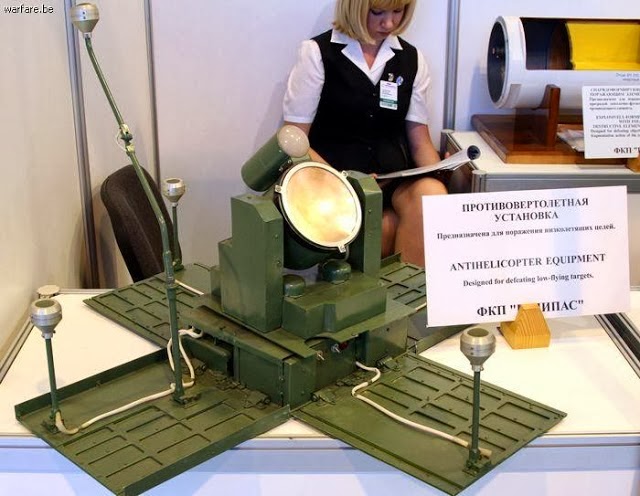
La mina antihelicópteros está diseñado para derrotar a los objetivos con un penetrador formado de explosivos de alta velocidad a una distancia de hasta 150 m.
La mina detecta un objetivo por medio de un sistema acústico en un alcance de hasta 1 km, gira la cabeza en la dirección del objetivo, y el escaneo por medio de un sensor de infrarrojos determina la dirección real para el objetivo y el momento de la detonación de la mina. La ojiva se puede colocar de manera manual y con equipos terrestres o por entrega de medios aéreos.
Las minas antihelicóptero se utilizan para proteger instalaciones de ataques de helicópteros y bloquear aeródromos del enemigo. Una mina de este tipo está compuesta de un sistema acústico, un sensor de frecuencia y una carga de combate. El sistema acústico detecta el blanco a distancias de hasta un kilómetro mientras que el sensor de frecuencia determina la posición del blanco y activa la carga de combate.
La mina puede destruir blancos a distancias de hasta 100 metros. Los blancos son impactados por un núcleo que se forma después de la explosión. La mina puede funcionar en régimen automático y también se puede activarla a distancia para derribar helicópteros dentro de la zona de impacto.
La mina se puede utilizar en:
la defensa de las instalaciones militares y civiles de los ataques de los helicópteros;
para defender las zonas costeras, donde el aterrizaje de helicópteros es posible;
para prevenir la remoción de minas por medio de helicópteros, junto con minas antitanque;
bloquear pistas de aeródromos del enemigo;
para bloquear áreas, donde aeródromos alternativos o dispersión se pueden configurar;
para influir psicológicamente en piloto de helicóptero para hacerle piloto a gran altura.

Especificaciones:
Alcance de detección de objetivos, hasta 1000 m.
Velocidad del objetivo, hasta 100 m / s.
Alcance de destrucción, hasta 150 metros
Tipo Proyectil de carga de ojiva explosivamente formada
Velocidad elemento de destrucción, hasta 2500 m / s.
Tiempo de transición al modo activo, 15 segundos
Método de colocación manual, automática (de vehículos)
Tiempo de colocación manual, 5 min
Peso, 12 kg
Control remoto a través del canal de radio
Fuente: Ria Novosti

La mina antihelicópteros está diseñado para derrotar a los objetivos con un penetrador formado de explosivos de alta velocidad a una distancia de hasta 150 m.
La mina detecta un objetivo por medio de un sistema acústico en un alcance de hasta 1 km, gira la cabeza en la dirección del objetivo, y el escaneo por medio de un sensor de infrarrojos determina la dirección real para el objetivo y el momento de la detonación de la mina. La ojiva se puede colocar de manera manual y con equipos terrestres o por entrega de medios aéreos.
Las minas antihelicóptero se utilizan para proteger instalaciones de ataques de helicópteros y bloquear aeródromos del enemigo. Una mina de este tipo está compuesta de un sistema acústico, un sensor de frecuencia y una carga de combate. El sistema acústico detecta el blanco a distancias de hasta un kilómetro mientras que el sensor de frecuencia determina la posición del blanco y activa la carga de combate.
La mina puede destruir blancos a distancias de hasta 100 metros. Los blancos son impactados por un núcleo que se forma después de la explosión. La mina puede funcionar en régimen automático y también se puede activarla a distancia para derribar helicópteros dentro de la zona de impacto.
La mina se puede utilizar en:
la defensa de las instalaciones militares y civiles de los ataques de los helicópteros;
para defender las zonas costeras, donde el aterrizaje de helicópteros es posible;
para prevenir la remoción de minas por medio de helicópteros, junto con minas antitanque;
bloquear pistas de aeródromos del enemigo;
para bloquear áreas, donde aeródromos alternativos o dispersión se pueden configurar;
para influir psicológicamente en piloto de helicóptero para hacerle piloto a gran altura.

Especificaciones:
Alcance de detección de objetivos, hasta 1000 m.
Velocidad del objetivo, hasta 100 m / s.
Alcance de destrucción, hasta 150 metros
Tipo Proyectil de carga de ojiva explosivamente formada
Velocidad elemento de destrucción, hasta 2500 m / s.
Tiempo de transición al modo activo, 15 segundos
Método de colocación manual, automática (de vehículos)
Tiempo de colocación manual, 5 min
Peso, 12 kg
Control remoto a través del canal de radio
Fuente: Ria Novosti

Arpia- Sargento Mayor de Tercera
- Cantidad de envíos : 5340
Fecha de inscripción : 01/09/2009
 Re: Noticias y Generalidades
Re: Noticias y Generalidades
Interesante, el juguete

vudu 1- Capitán
- Cantidad de envíos : 12486
Fecha de inscripción : 24/03/2011
Localización : selva!!!
 Re: Noticias y Generalidades
Re: Noticias y Generalidades
Nos metieron en este peo otra vez...
JF-17 Thunder variant may be popular among developing nations
The JF-17 Block-II — the upgrade version of the JF-17 Thunder or Xiaolong fighter jet co-designed by China and Pakistan — is likely to be a very popular combat aircraft among developing nations, according to the Diplomat, an online current affairs magazine based in Tokyo.
Quoting reports from the Washington-based online portals Defense News and Defense Talk, the Diplomat stated that Pakistan has recently launched production of the JF-17 Block-II at the Pakistan Aeronautical Complex near Islamabad. The country expects to begin exporting the aircraft next year, the report said, adding the newer JF-17 Block-II variants possesses more advanced weapons systems and avionics.
"We've been getting inquiries and expressions of interest for the JF-17 Thunder from many countries in the Middle East, Africa and from as far as South America," said Air Marshal Sohail Gul Khan of the Pakistan Aeronautical Complex.
A report published in 2010 indicated that the potential buyers of JF-17 includes Azerbaijan, Bangladesh, Congo, Egypt, Indonesia, Iran, Nigeria, the Philippines, Sri Lanka, Sudan, Turkey, Venezuela and Zimbabwe.
The Pakistan Aeronautical Complex has already produced 50 older and less-advanced JF-17 Block-1 fighters for the nation's air force. This low-cost multirole single engine fighter was originally co-designed by China's Chengdu Aircraft Industry Group and the Pakistan Aeronautical Complex. In China, the aircraft is called the FC-1 Xiaolong or Fierce Dragon.
Earlier last week, Pakistani prime minister, Nawaz Sharif, visited the Pakistan Aeronautical Complex to officially inaugurate the beginning of the Block-II production. The event was also attended by Chinese delegates and the Pakistan air force, the Diplomat said.
http://www.wantchinatimes.com/news-subclass-cnt.aspx?id=20131231000052&cid=1101

Arpia- Sargento Mayor de Tercera
- Cantidad de envíos : 5340
Fecha de inscripción : 01/09/2009
 Re: Noticias y Generalidades
Re: Noticias y Generalidades
No hombre, puras monzergas

vudu 1- Capitán
- Cantidad de envíos : 12486
Fecha de inscripción : 24/03/2011
Localización : selva!!!
Página 17 de 40. •  1 ... 10 ... 16, 17, 18 ... 28 ... 40
1 ... 10 ... 16, 17, 18 ... 28 ... 40 
 Temas similares
Temas similares» Noticias y Generalidades
» Noticias y Generalidades
» Noticias Y Generalidades
» Noticias y Generalidades
» Noticias y Generalidades
» Noticias y Generalidades
» Noticias Y Generalidades
» Noticias y Generalidades
» Noticias y Generalidades
Página 17 de 40.
Permisos de este foro:
No puedes responder a temas en este foro.




